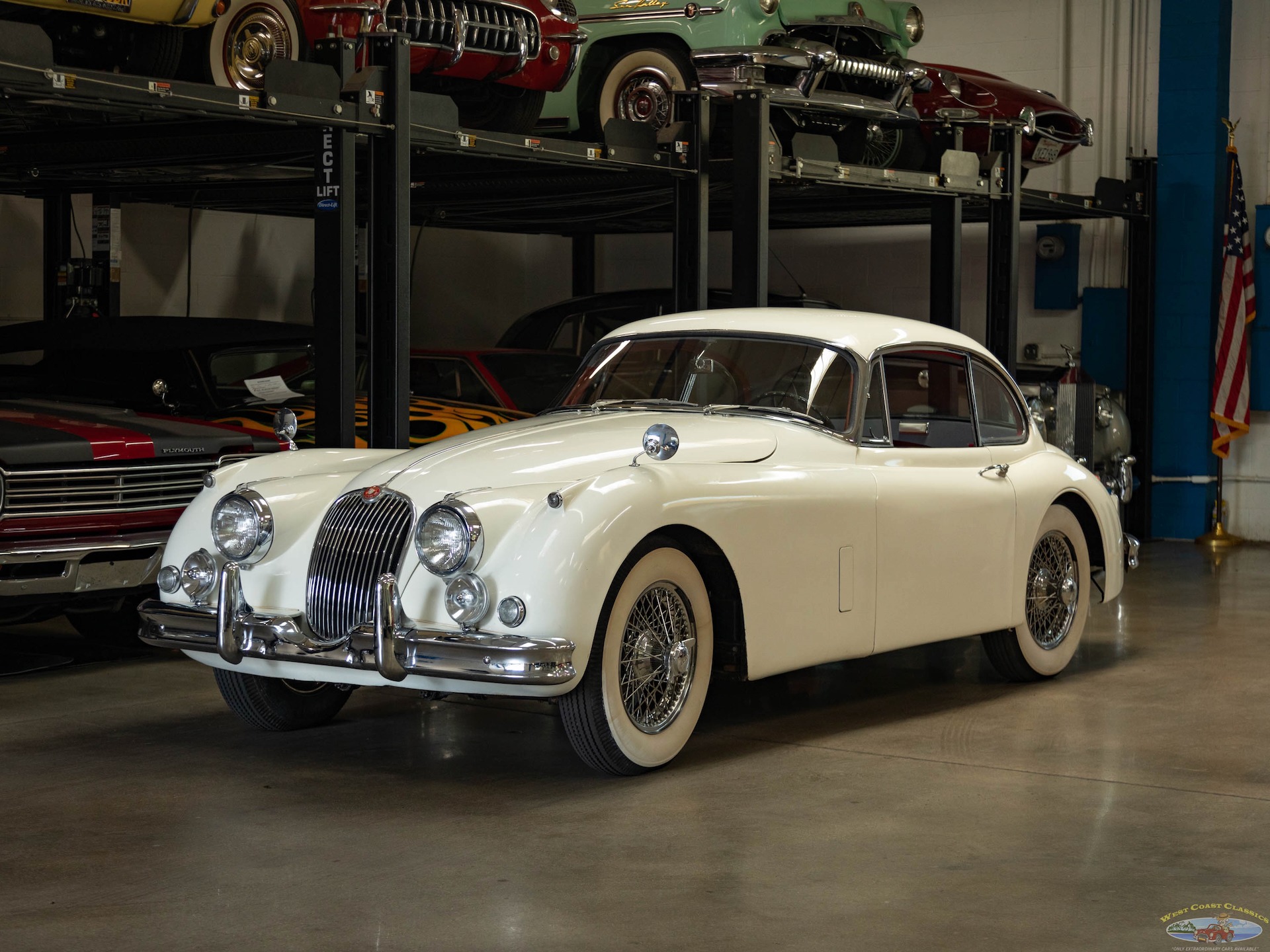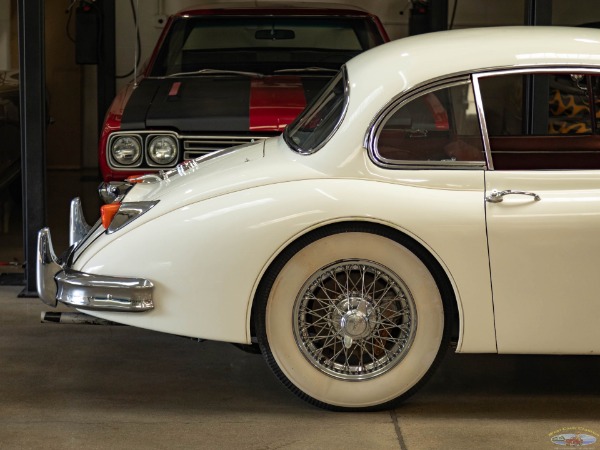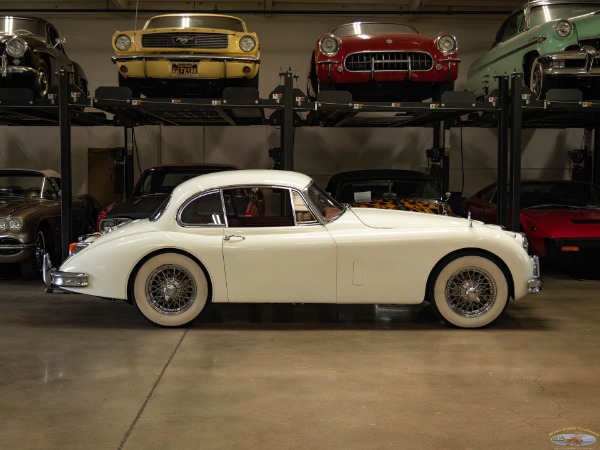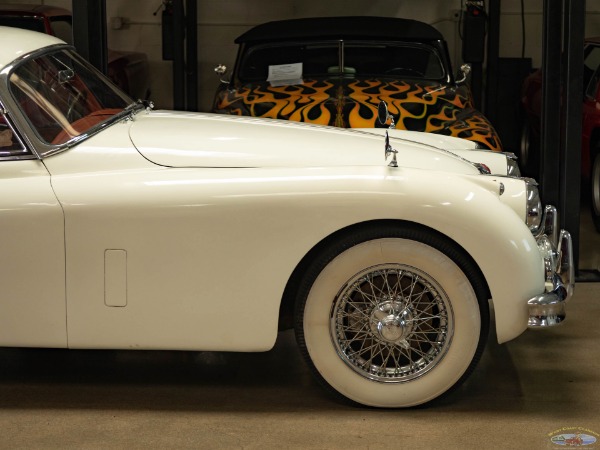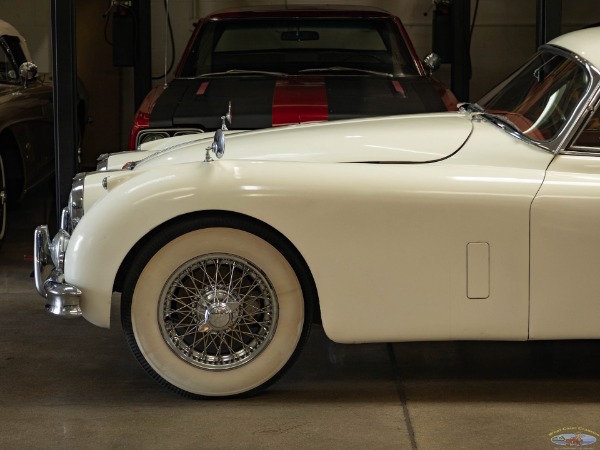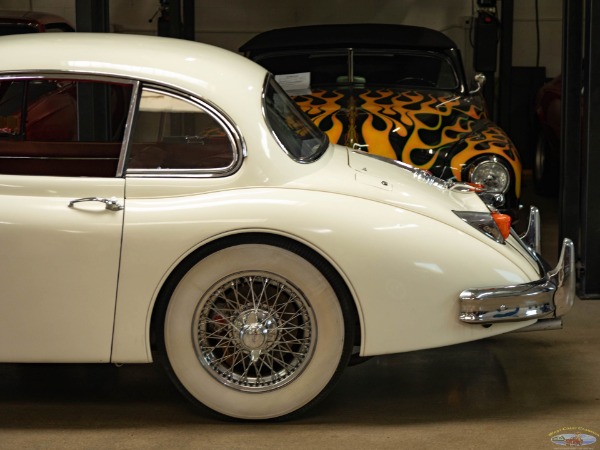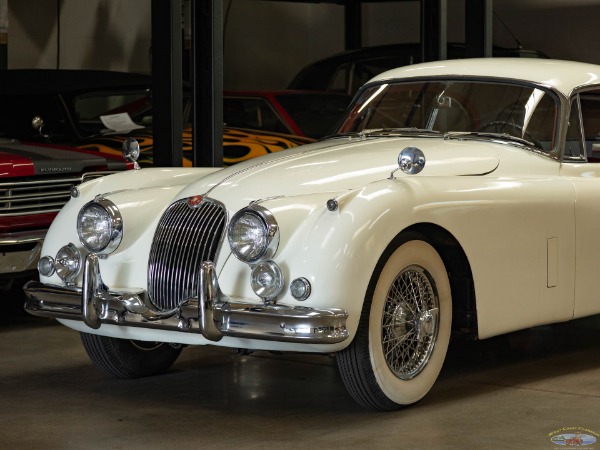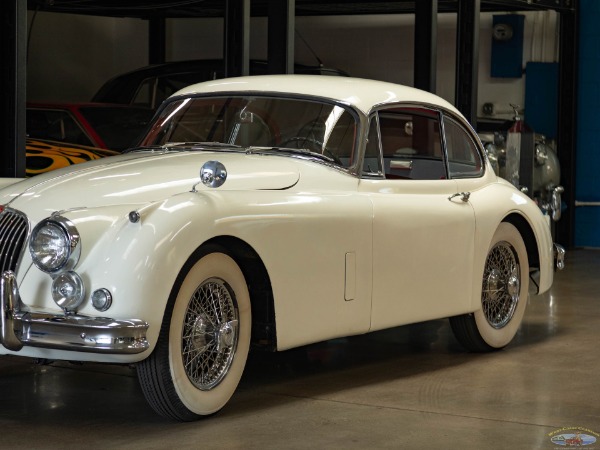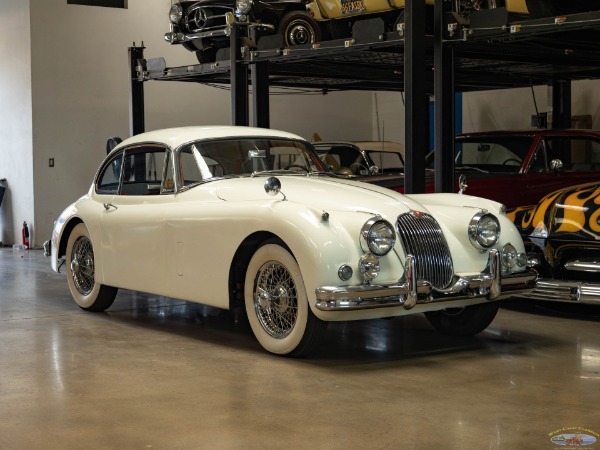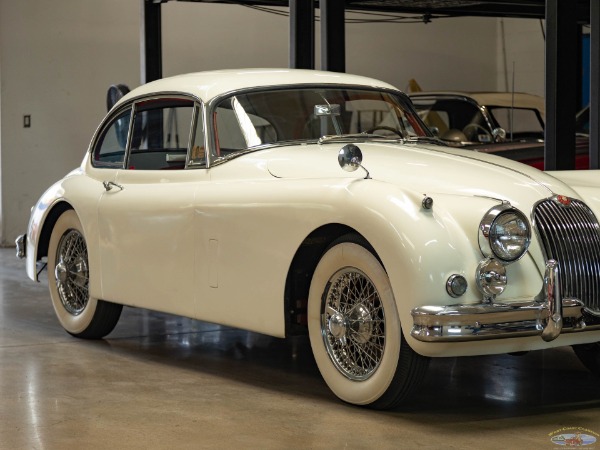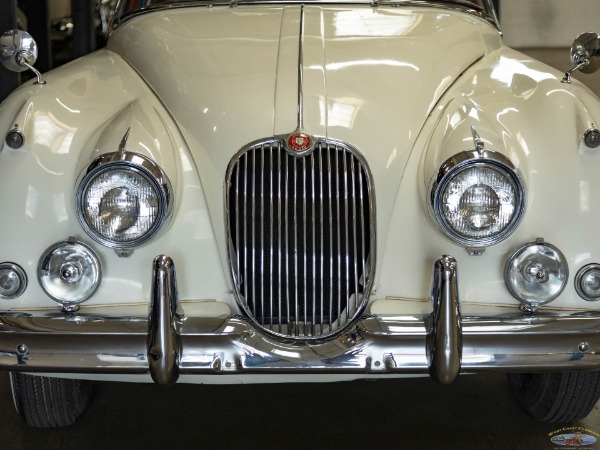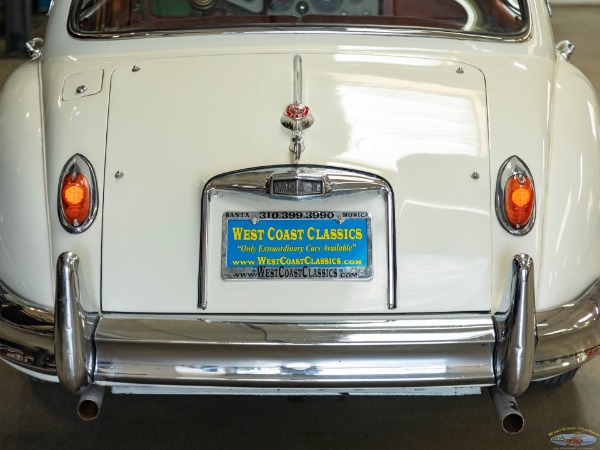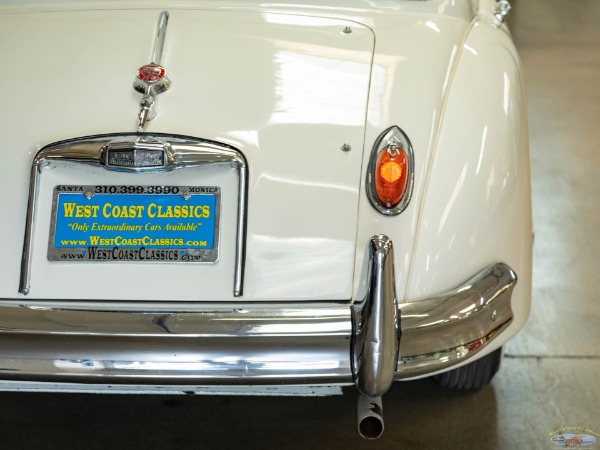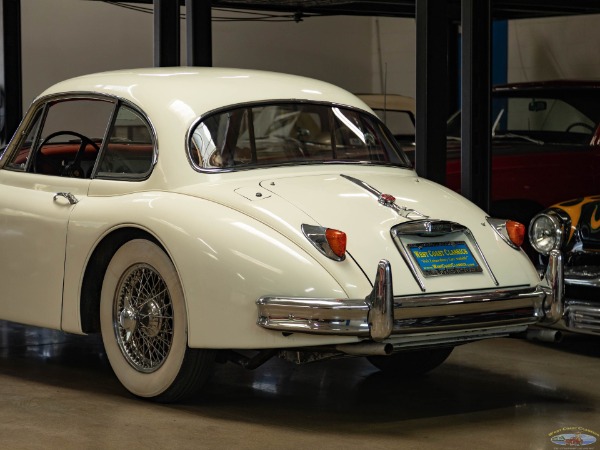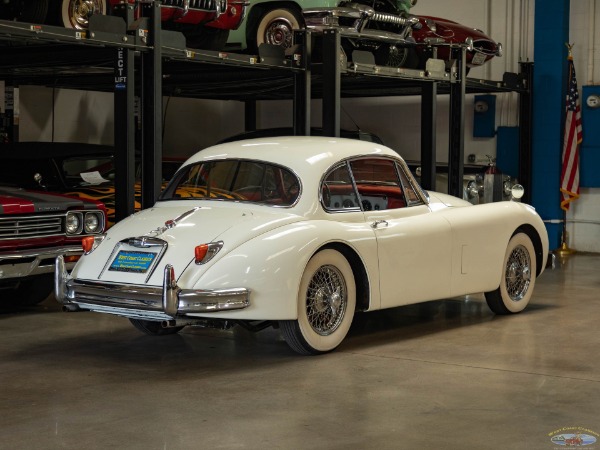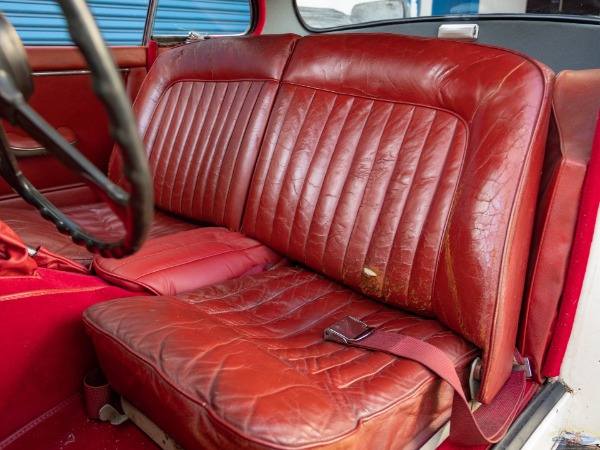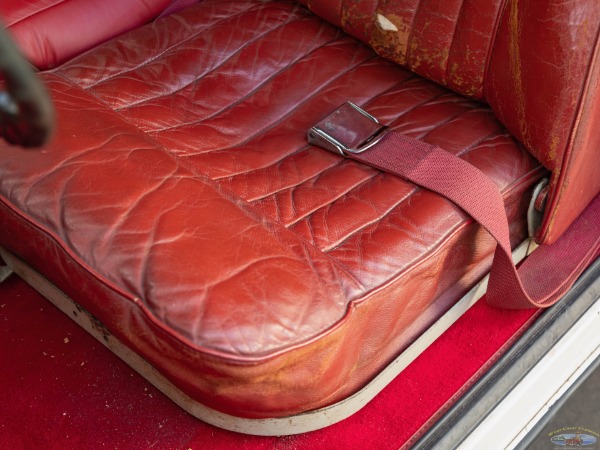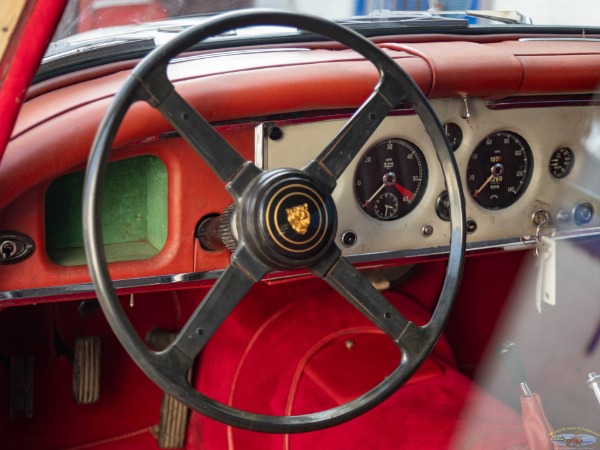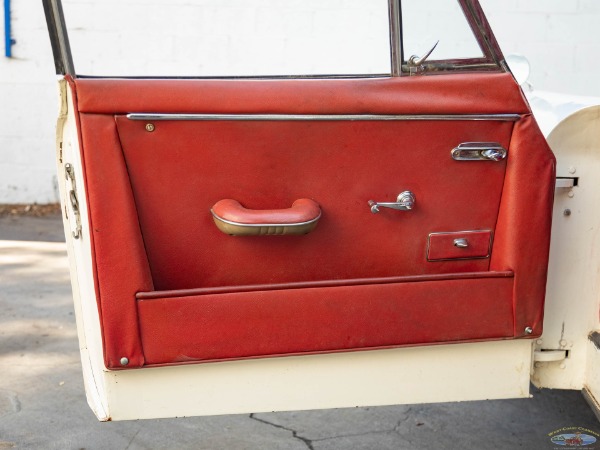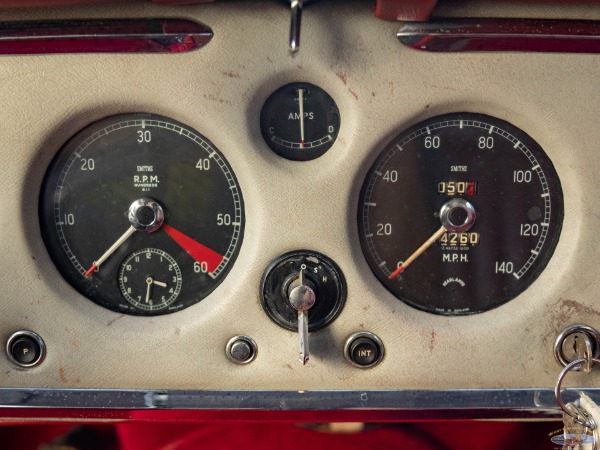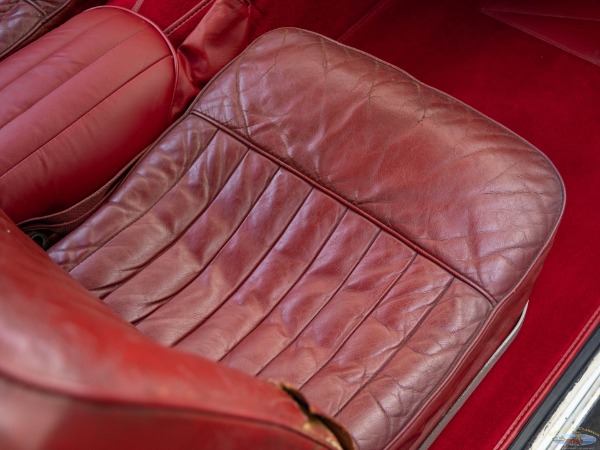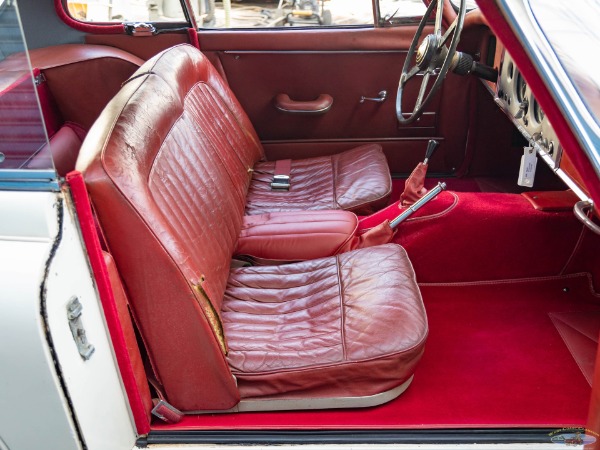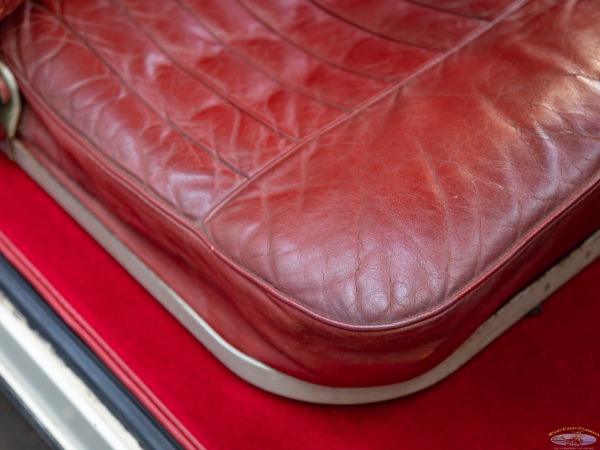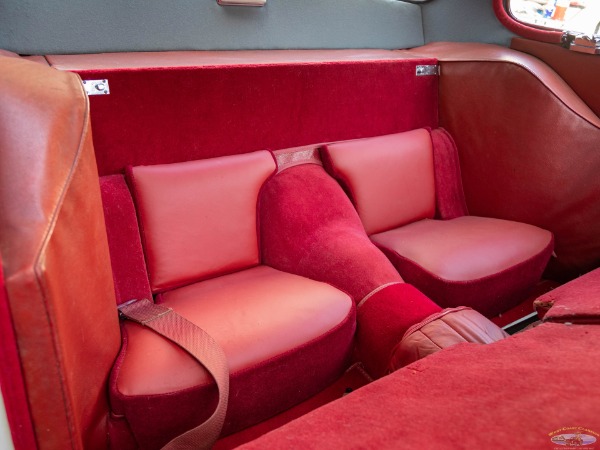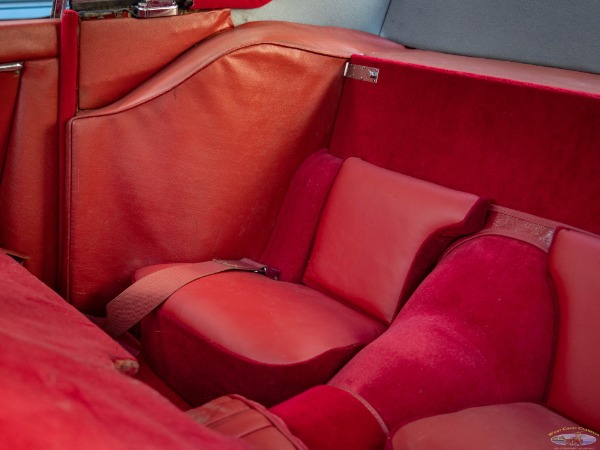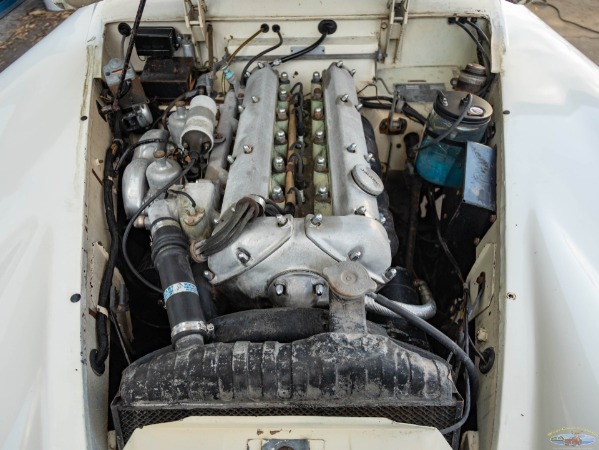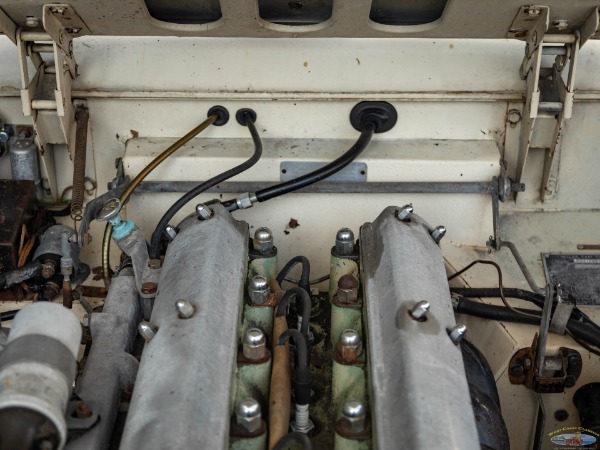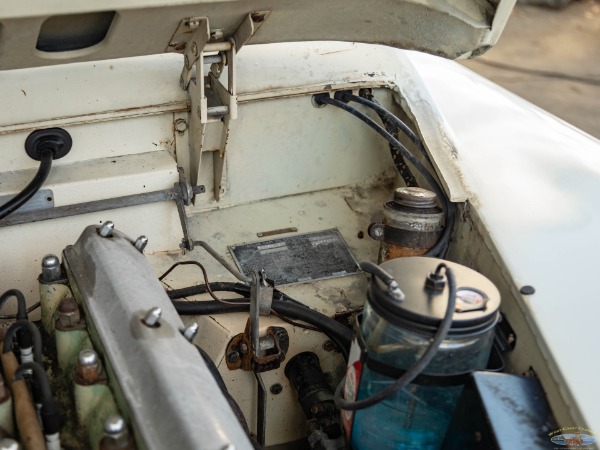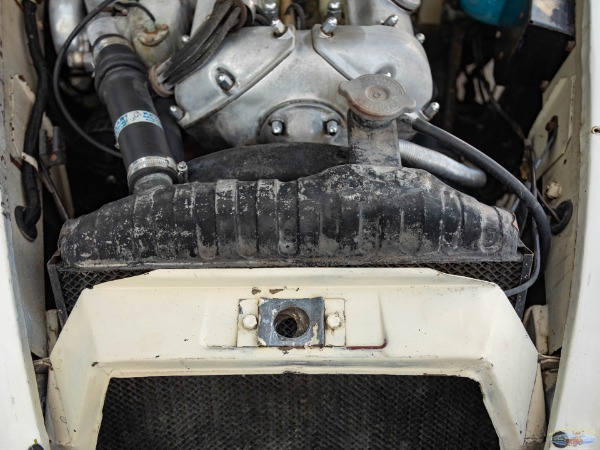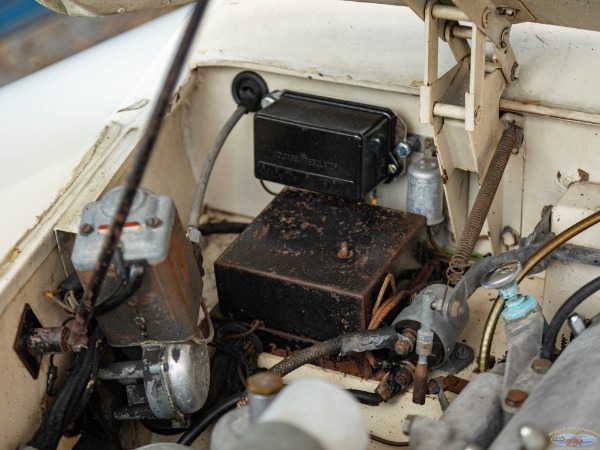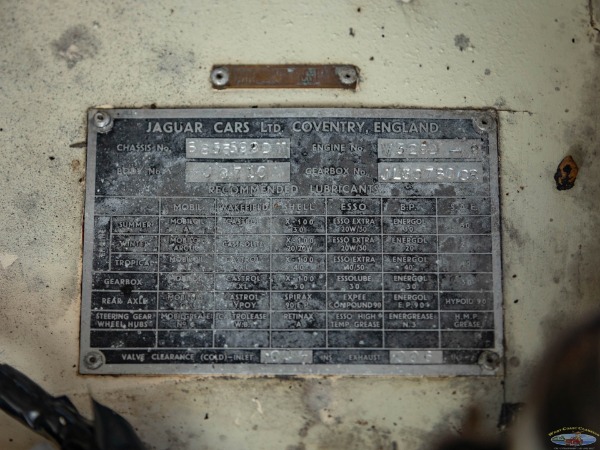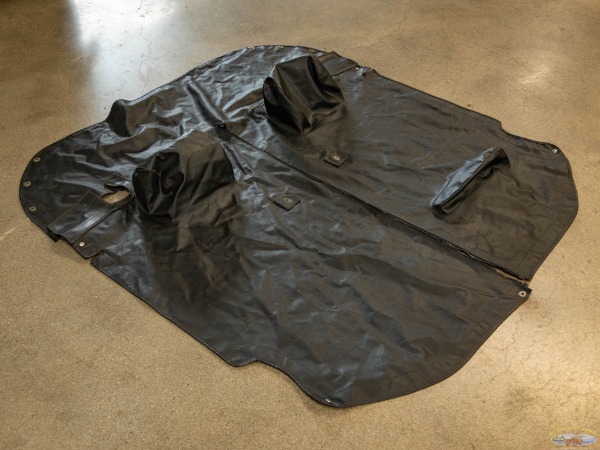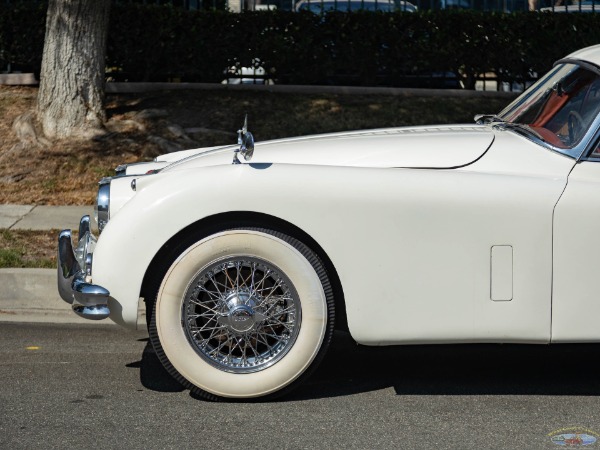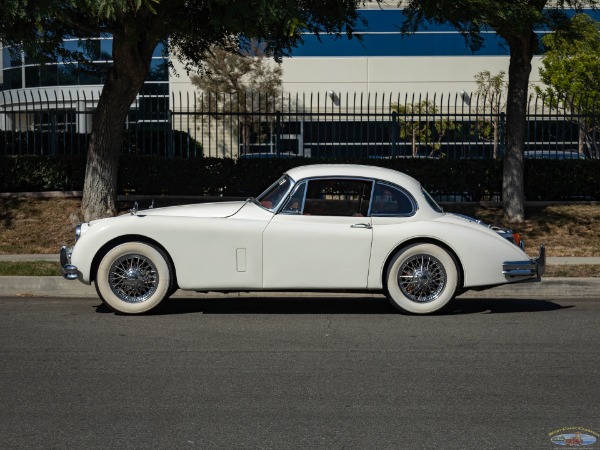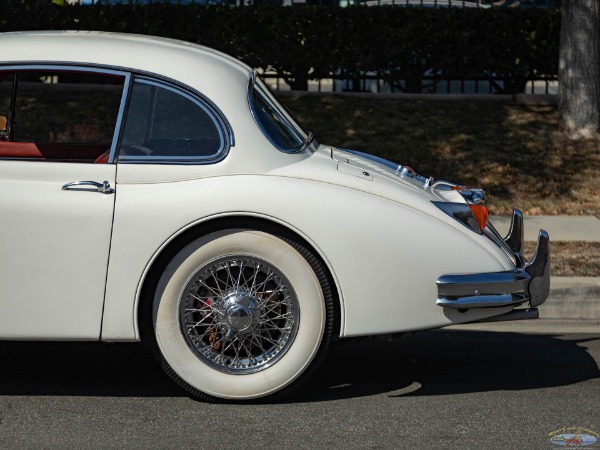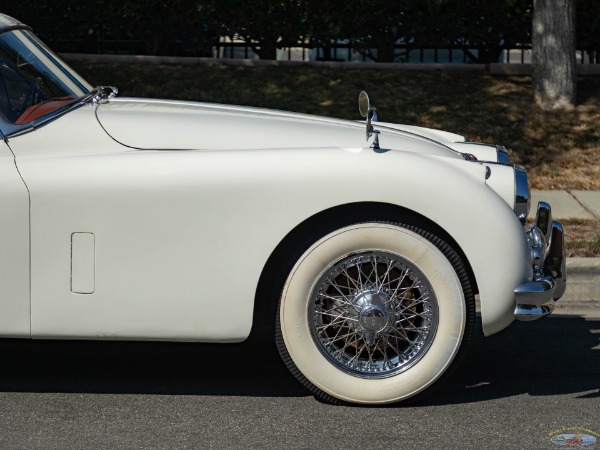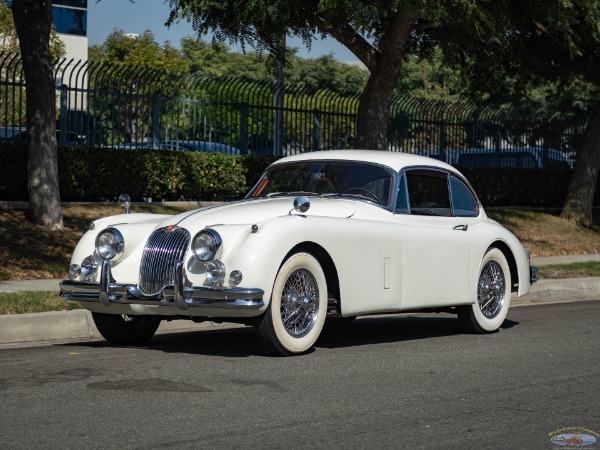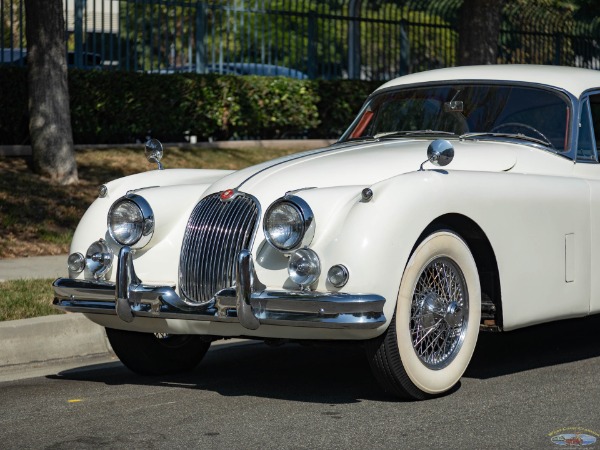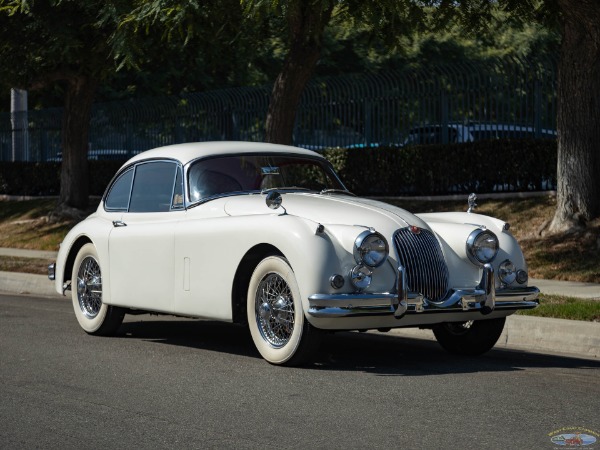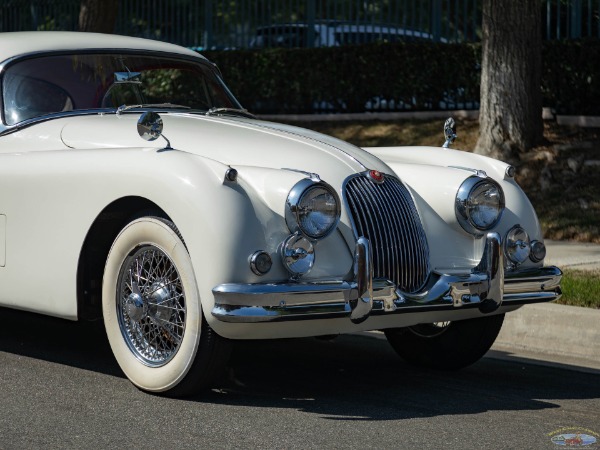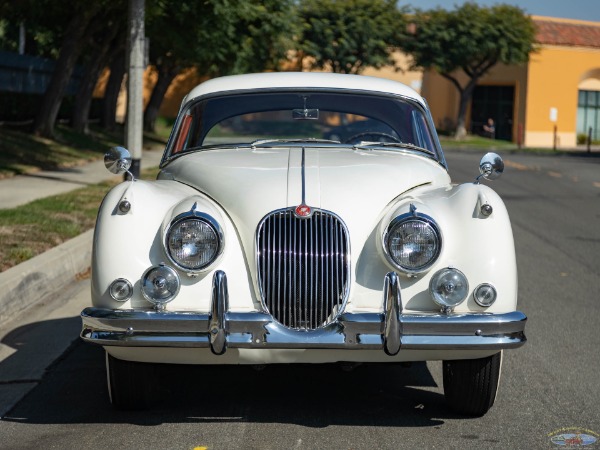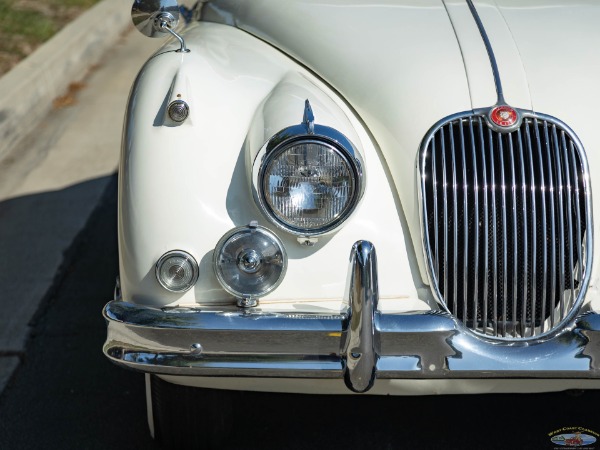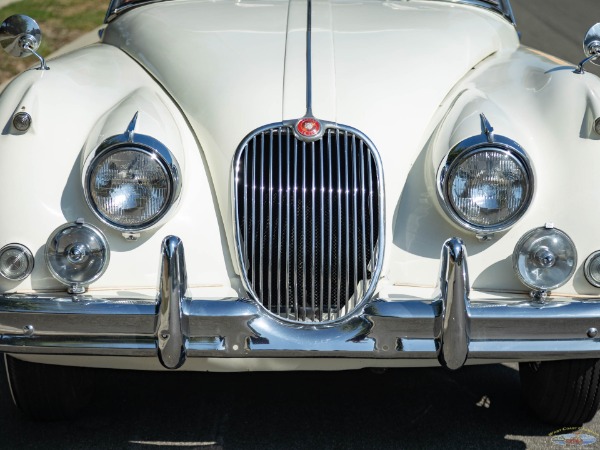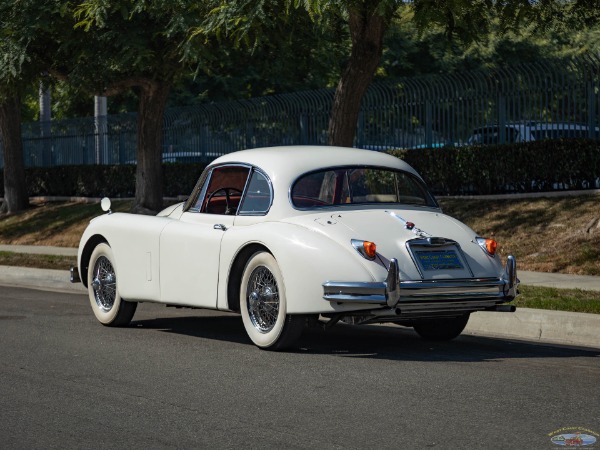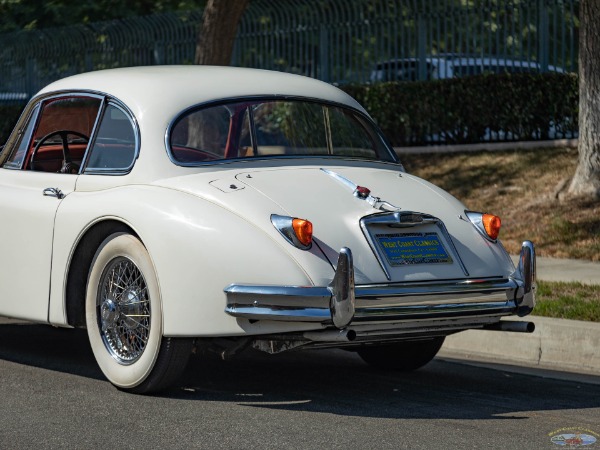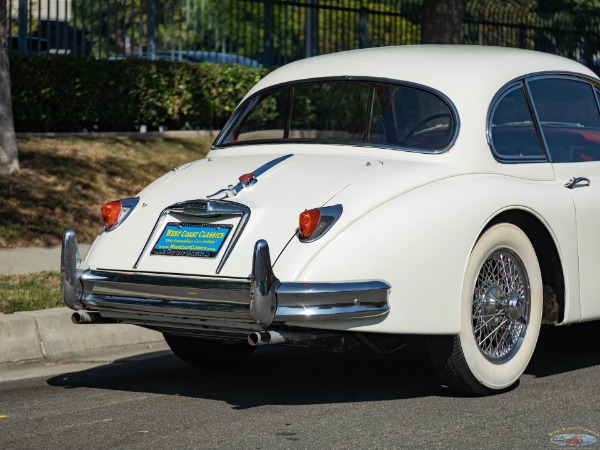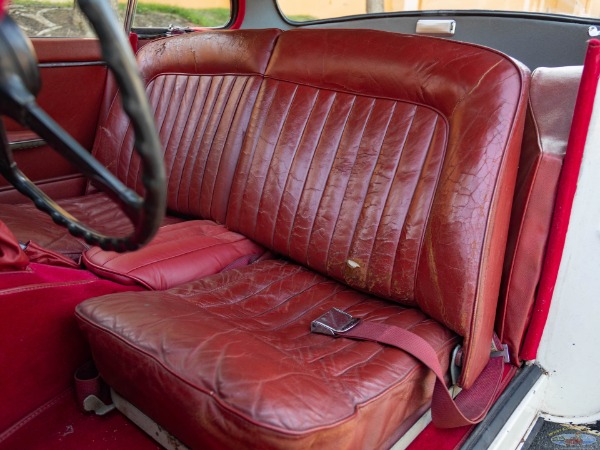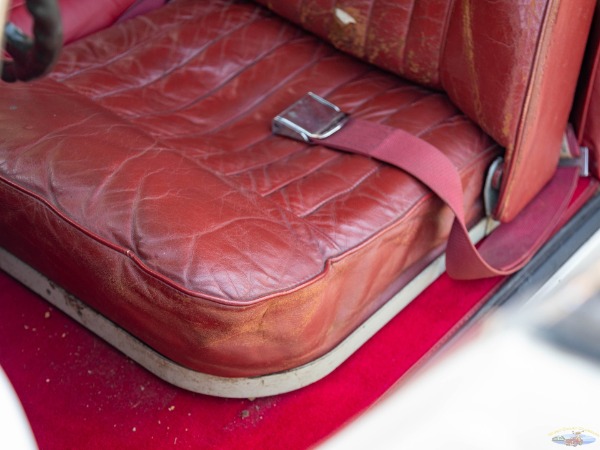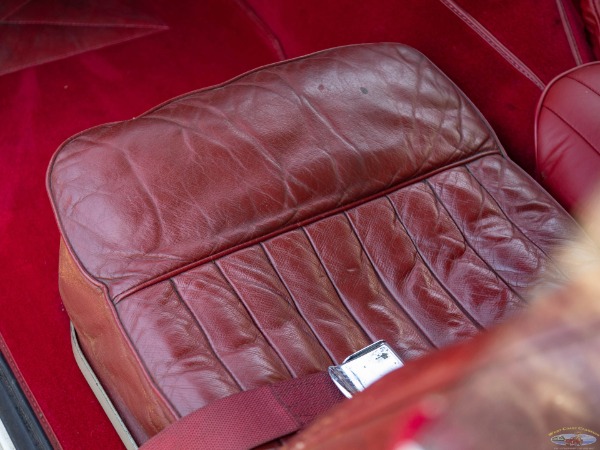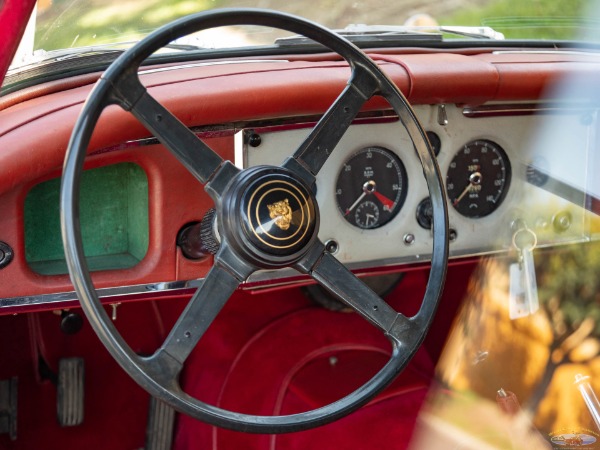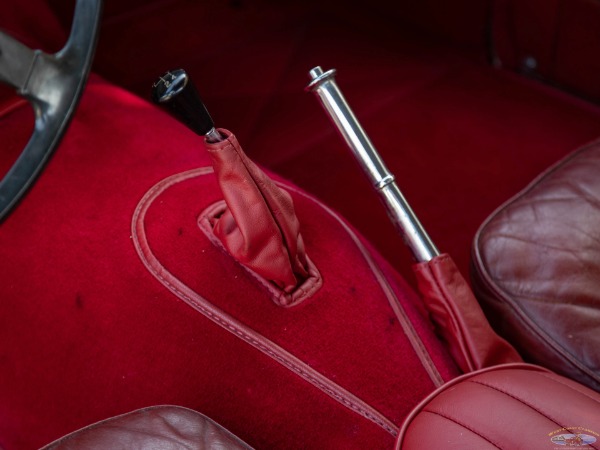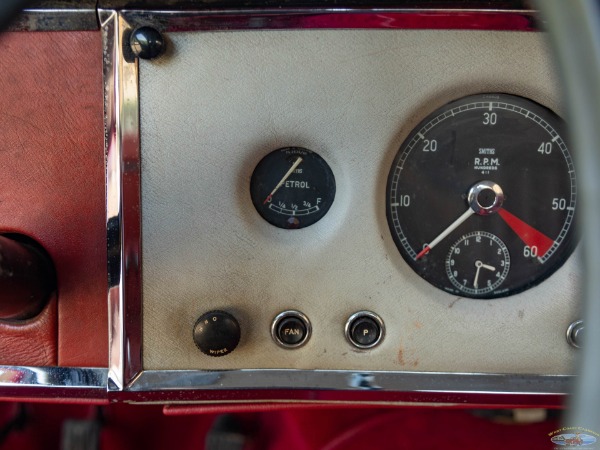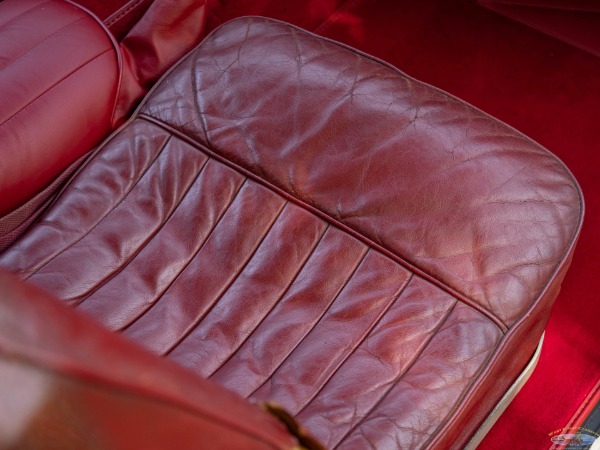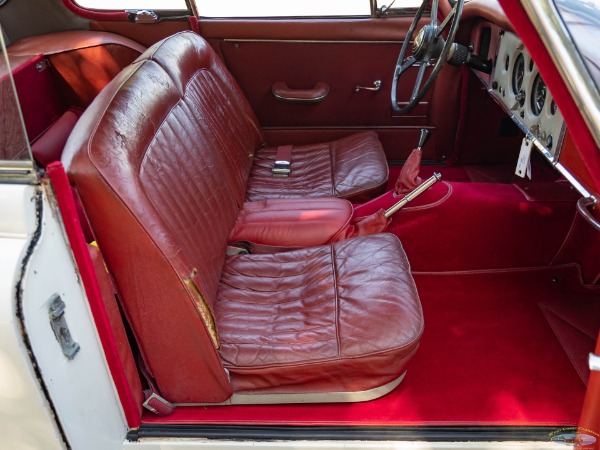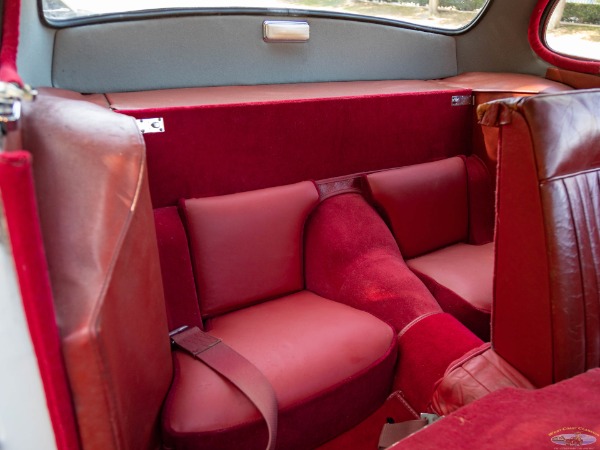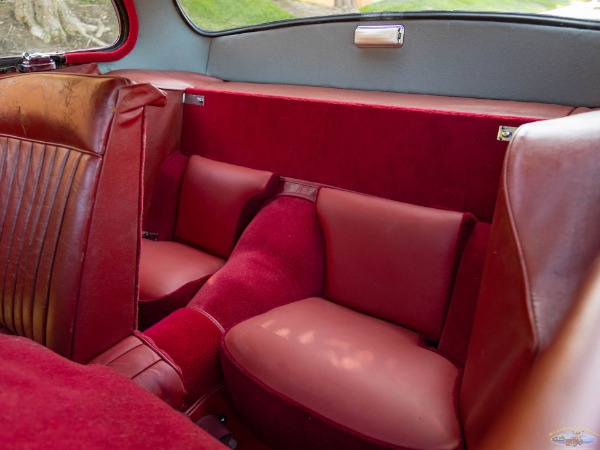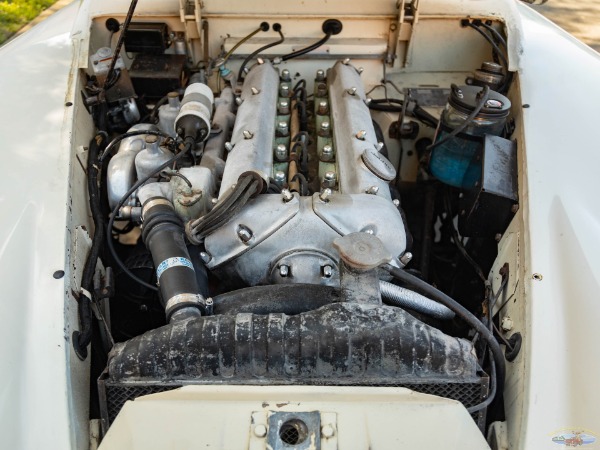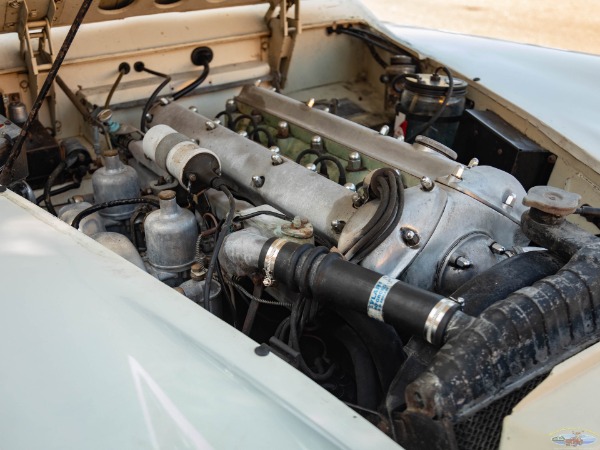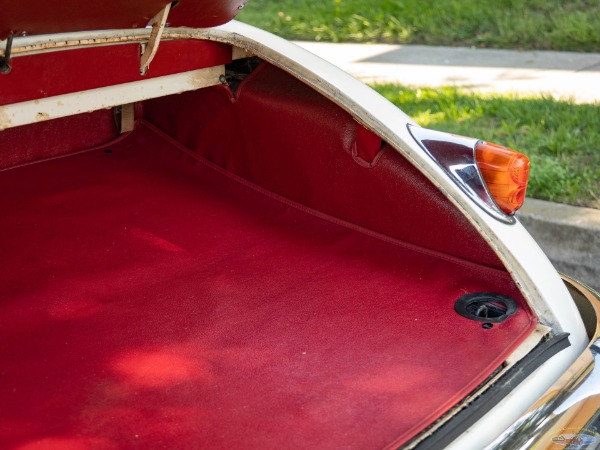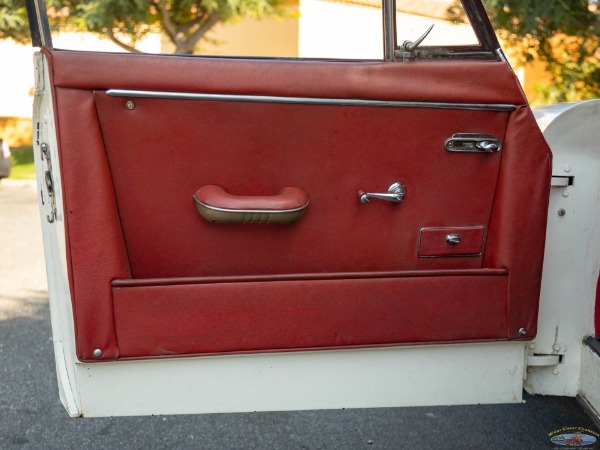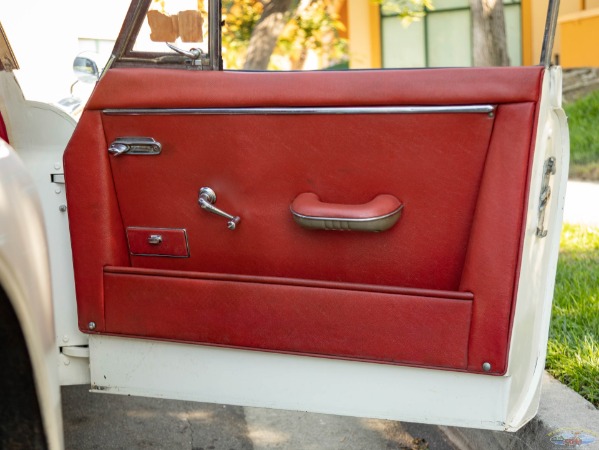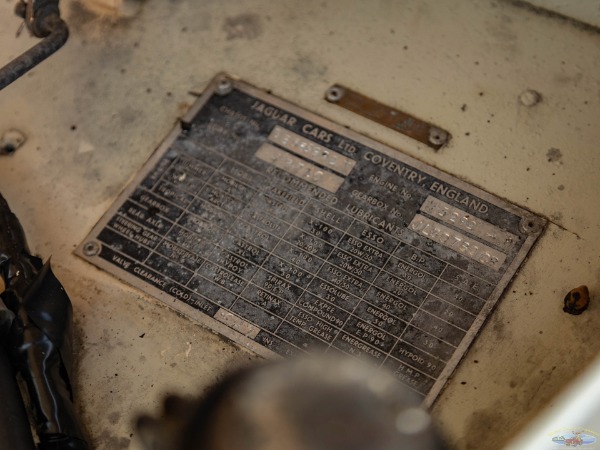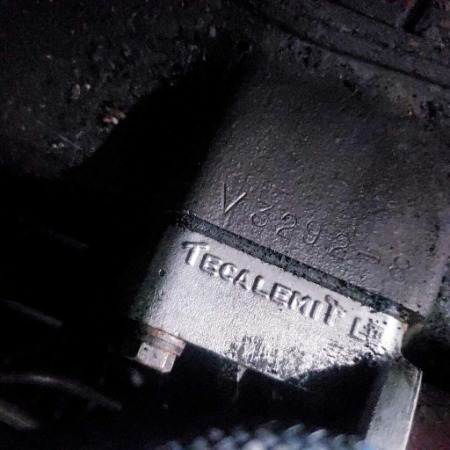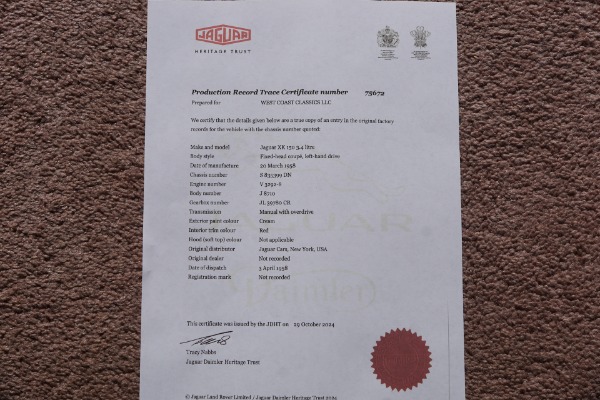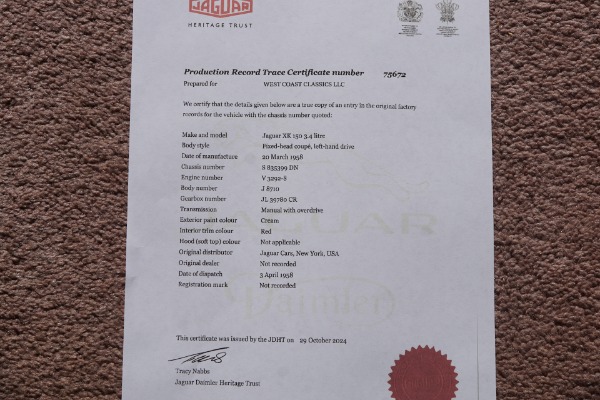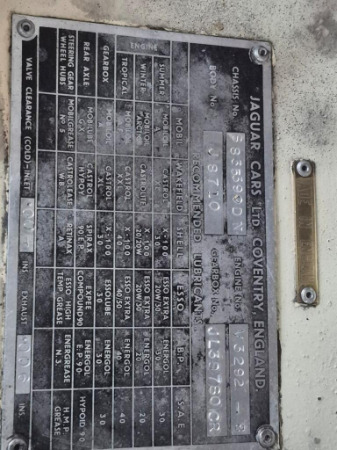West Coast Classics are proud to present a very rare and mostly all original matching #'s example of this all stock and rust free coveted and highly desirable 1959 Jaguar XK 150 Fixed Head Coupe with Left Hand Drive U.S. delivery in 'Old English White' color paint with its original 3442cc 6 cylinder engine with dual SU HD6 carbs and which boasts its all original Red leather seats and chrome wire wheels.
All matching numbers original 3.4L 6 cylinder engine and 4 speed manual transmission! We recently acquired the car with the car sporting an excellent body with no signs of any previous damage history and no rust, a true mostly all original survivor! The car boasts four chrome wire knock off wheels and its original matching numbers engine. This is a rare car; 1 of only 4,445 XK150 Fixed Head Coupes in total (1957-60). The car driving exactly as it should with a recent full service after being acquired from a prominent collection.
3,442 CC DOHC Inline 6-Cylinder Engine
Twin SU Carburetors
4-Speed Manual Gearbox
4-Wheel Hydraulic Disc Brakes
Front Independent Torsion-Bar Suspension
Rear Live Axle with Semi-Elliptical Leaf Springs
The XK 120 was produced by Jaguar between 1948-54 and caused an absolute sensation when launched and was immediately destined to become one of the most collectible cars of all time. Its name referred to its straight 6, 3442 cc 120 mph (193 km/h) top speed (faster with the windscreen removed!) engine which was insanely fast for its day and made the XK120 the world's fastest standard production car at the time of its launch and a very successful racer which spurred Jaguar onto breaking many world speed records.
When the model debuted in 1948 at the Earls Court Motor Show in London, England it was the darling of the show and remains today as much of a show stopper as it did then, over 74 years later! The car set numerous and now legendary speed records and was the fastest production car in the world in it's day and Jaguar used its engine for decades to come. In terms of design, the two-seater roadster with its classically simple flowing lines, slender tail and exotic flush-sided body was a massive leap forward for sports car design at the time and in many ways its styling remains unparalleled. Combined with new standards in terms of performance, Jaguar had obviously built what was destined to become this milestone and eminently always collectible classic car.
The attraction was obvious: Jaguar had created arguably the best-looking sports car on the market and, thanks to a powerful new straight six engine under the hood, the aerodynamically-styled machine would likely be the fastest production car in the world.
In late 1954, the XK120 was replaced by the XK140 which ushered in a number of cosmetic and mechanical updates.
By 1957, although the XK platform was nearing the end of its production life, there was still time for one final iteration: the XK150.
The 150 was the most refined XK yet. The majority of updates focused on the exterior and interior. However, the addition of disc brakes was also a major advancement. Revealed in May 1957, the XK150 bore an obvious family resemblance to the XK120 and XK140, but was radically revised. Most visibly, a one-piece windscreen replaced the split screen, and the wing line carried higher and more streamlined at the doors. The widened bonnet opened down to the wings, and on the coupes the windscreen frame was moved forward 4 inches to make passenger access easier.
The XK150 was launched in May 1957 and initially came in a choice of FHC and DHC body styles. An OTS Roadster joined the line up ten months later in March 1958.
From October 1959, Jaguar also offered a larger 3.8-litre engine which, like the 3.4, came in several alternative states of tune.
The XK150's dashboard came trimmed in leather, with walnut optional on all models. On the early drophead coups, the aluminum centre dash panel, which was discontinued after June 1958, had an X pattern engraving similar to the early 3.8 E-Type. Thinner doors gave more interior space. Suspension and chassis were very similar to the XK140, with manual-only rack and pinion steering available.
The 3.4 litre 6 cylinder was similar to the XK140's, but a new "B" type cylinder head raised power to 180 SAE bhp at 5750 rpm.
The XK150 S 3.4L XK engine with orange paint used on S models with straight port cylinder heads was fitted with three carburetors.
Disc brakes appeared for the first time as an option and the models could be fitted on either 16 5K solid wheels or optional 16 5K wire wheels such as this particular car.
The first closed and convertible XK150s were slower than their predecessors. After a twelve-month delay caused by the February 1957 factory fire, this deficit was corrected in the spring of 1958 with the March release of special equipment models fitted with disc brakes and the more powerful SE engine. Twin 1.75-inch (44 mm) SU HD6 carburetors and a modified B type cylinder head with larger exhaust valves improved performance to 220 BHP at 5500 rpm. While most export cars were SE models, a third option for the open two-seater featured an "S" engine with three 2-inch (51 mm) SU HD8 carburetors and a straight-port cylinder head boosting power to a claimed 265 BHP.
In 1960 the 220 hp 3.8 litre engine fitted in the full-sized luxury Mark IX sedan since October 1958 became available. It was tuned to produce up to 265 hp in S models and propel an XK150 to 135 mph (217 km/h) and from 060 mph in around 7.0 seconds.
In addition to the XK150, Jaguars product line included the Mark 1 Saloon which they had produced since 1955. Like the D-type sports racing car, the Mk1 was built around an advanced steel monocoque bodyshell. The XK150s eventual replacement, the fabled E-type, would follow suit in this regard.
Transmission was via a Moss four-speed manual gearbox or an optional three-speed automatic sourced from Borg-Warner.In addition to the standard 190bhp engine, Jaguar offered the Special Equipment upgrade that included their B-type cylinder head which had been developed from the C-type head fitted to previous iterations of the SE.
The new B-type head most notably featured enlarged exhaust valves. The rest of the upgrade pack included high lift camshafts, a 9.0:1 compression ratio, heavier torsion bars and twin exhausts. Wire wheels and fog lights were standard.
The XK150 SE developed 210bhp at 5500rpm which was 250rpm lower than the XK140 iteration.
Even more importantly, the torque rating was 216lb-ft at 3000rpm compared to 213lb-ft at 4000rpm for the outgoing XK140 SE.
As before, body panels were manufactured predominantly from steel. Exceptions were the hood and trunk lid which were formed from aluminum.To increase cockpit space and make access easier, FHC and DHC variants came with a windscreen that was moved four-inches further forward. Up front, the hood was widened and given a noticeably broader 16-bar instead of seven-bar grille.
To further modernize the XKs appearance, the tops of the front fenders were flattened thus giving a more integrated look. Similarly, down each flank, the previously curvaceous line the flowed from the front to the rear fenders was straightened lending a more contemporary, slab-sided appearance. This in turn enabled the doors to be more neatly integrated.
Inside, the XK150 featured a new dash layout. The large read outs for road and engine speed (previously located at either end of the dash) were now positioned centrally. In between them was a small ammeter and the toggle switch for the lights. Although the walnut veneered dash and door caps used previously were still available as an option, as standard they were now upholstered in leather. An alloy dash fascia was also available. To reflect the extra space inside, subtly revised seats were installed. Once again, the FHC variant came with two small rear seats. Leather was used to upholster practically every surface that wasnt carpeted. In addition to the Special Equipment package, Jaguar offered a variety of optional extras.
Buyers could have the exterior of their XK150 enhanced with Lucas fog lamps, a leaping Jaguar mascot for the hood, a chromed luggage rack for the trunk, a chromed badge bar, Dunlop Road Speed tyres with whitewalls and steel wheels with chrome hub caps and rear wheel spats. Performance upgrades included a dual exhaust system, close-ratio gearbox and Dunlop racing tires. Instead of the standard 8.0:1 compression ratio, a 7.0:1 or 9.0:1 ratio could be requested. A steel underbody shield gave protection against adverse road conditions.
Cockpit extras included fitted luggage (two suitcases to match the rest of the interior), a choice of Radiomobil radios, an aluminum dash, bucket seats and a white or wood finished Bluemels steering wheel. The FHC could be specified with a Weathershields sunroof. The DHC could be specified with a full-length tonneau cover.
The XK150 FHC weighed in at 1473kg while the DHC variant was slightly lighter at 1460kg. In comparison, the outgoing XK140s had both tipped the scales at 1420kg. Top speed of the standard (non-SE) XK150 variants was 124mph compared to 125mph for the equivalent XK140s. The XK150s 0-62mph time was a tenth quicker at 8.3 seconds. The S engine (which was not available with an automatic gearbox) came with triple SU HD8 carburettors instead of twin HD6 units. It also featured a new straight port cylinder head to improve air flow. Cars ordered to S specification came with all the Special Equipment trim as standard. The result was a peak output of 250bhp at 5500rpm and 240lb-ft at 4500rpm.
Unsurprisingly, the 3.4 S was the fastest XK150 yet; all three body styles could hit around 135mph while the 0-62mph time dropped to a little over seven seconds. At the London Motor Show in October 1959, Jaguar launched a brace of new 3.8-litre engine options for the 1960 model year. The 3.8 motor had already seen service in the Mark IX Saloon which had been launched a year earlier. It was bored from 83mm to 87mm while stroke remained unchanged at 106mm. This gave a displacement of 3781cc which was a 339cc gain over the 3.4-litre unit. Both iterations of the 3.8-litre engine ran an 8.0:1 compression ratio.
The 3.8 SE came with two SU HD6 carburettors. It produced 220bhp at 5500rpm and 240lb-ft at 3000rpm. Top speed was 130mph and 0-62mph took 7.4 seconds.
The top-of-the-range 3.8 S came with triple SU HD8 carbs. Peak output was 265bhp at 5500rpm and 260lb-ft at 4000rpm. Top speed was 137mph and 0-62mph took 7.1 seconds.
XK150 production ended in November 1960. In total, 9365 were built in all configurations.
Four months later (in March 1961), production of the highly anticipated E-type began.
Left-hand drive XK150 DHC production ran from March 1957 to October 1960. VINs ranged from 837001 to 839010.
Right-hand drive XK150 DHC production ran from November 1957 to October 1960. VINs ranged from 827001 to 827663.
Of the 2682 XK150 DHC constructed, 1903 were to 3.4 / SE trim, 104 were to 3.4 S trim, 586 were to 3.8 trim and 89 were to 3.8 S trim.
Left-hand drive XK150 FHC production ran from March 1957 to November 1960. VINs ranged from 834001 to 847095. (This particular model being VIN # 835699)
Right-hand drive XK150 FHC production ran from August 1957 to October 1960. VINs ranged from 824001 to 825369.
Of the 4450 XK150 FHC constructed, 3445 were to 3.4 / SE trim, 199 were to 3.4 S trim, 656 were to 3.8 trim and 150 were to 3.8 S trim.
Left-hand drive XK150 OTS production ran from September 1957 to November 1960. VINs ranged from 830001 to 832174.
Right hand drive XK150 OTS production ran from October 1958 to October 1960. VINs ranged from 820001 to 8200093.
Of the 2263 XK150 OTS constructed, 1297 were to 3.4 / SE trim, 888 were to 3.4 S trim, 42 were to 3.8 trim and 36 were to 3.8 S trim.
This particular FHC XK150 includes the dual exhaust, wire spoke wheels and additional front lights. This fine XK150 is remarkably clean and is virtually 100% original under the bonnet. The fit and finish of the entire car is excellent.
The car has no rust whatsoever with the floor boards and all the typical rust-prone areas all original and unrestored and not painted and solid and rust-free! The car has no signs of any accidents and has a very straight body and looks extremely impressive with the Red leather interior and chrome wire wheels and a beautiful interior with the door panels, dashboard, seats and carpets all in very fine all condition throughout.
Combined with new standards in terms of performance, Jaguar had obviously built what was destined to become this milestone and eminently always collectible classic car.
Engine # 3292-8
Chassis # S835699DN
Body # J871C
Gearbox # JL307800CR
The lucky new owner will no doubt be eligible for nearly any major classic car rally or event he or she chooses. An excellent and highly drivable example of a true sporting legend, this exceptional, low mileage Jaguar simply begs to be driven.





